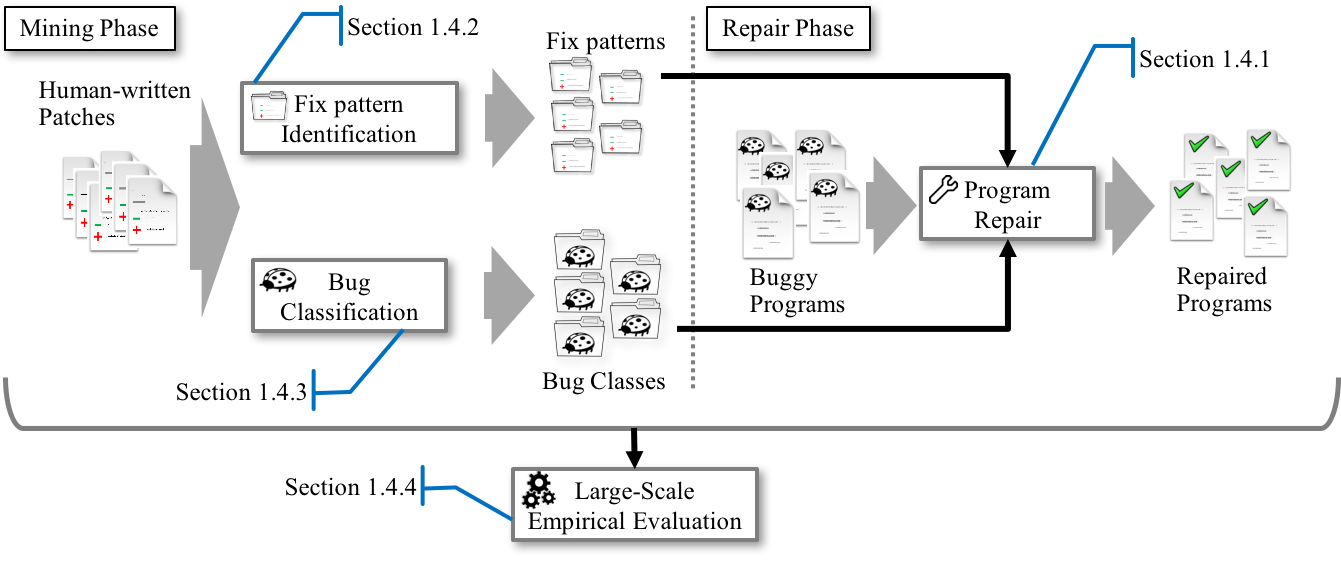FIXPATTERN
-
Title: Automated Program Repair using Fix patterns Learned from Human-written Patches
-
Funding source: Luxembourg National Research Fund (FNR)
-
Period: 1st August 2015 - 30th November 2018.
-
Summary: Patch generation is one of the important tasks in software maintenance. However, it is the least explored area while a large number of research work have been conducted for other debugging activities such as fault localization and prioritization . In practice, debugging cannot be completed without patch generation even if a fault is accurately localized or efficiently prioritized.
In addition, patch generation is recognized as an essential task in software development since most contemporary software systems inevitably contain bugs that need to be fixed. As the size and complexity of software systems get larger and higher, significantly more number of bugs are found and reported. Naturally, the corresponding cost for resolving the bugs is rapidly increasing.
To minimize time and cost spent fixing bugs, an automated program repair technique must be devised. Even if this approach may fix a certain portion of bugs, it can largely mitigate burden for debugging so that developer can focus on more creative activities. In addition, the quality of software can be improved as the number of bugs is reduced. This strongly motivates the project, FIXPATTERN, an automated technique for patch generation.
The FIXPATTERN project aims at presenting new approaches to automated program repair. First, the project devises a novel pattern-based repair technique learned from human-written patches. This technique can outperform existing techniques based on random mutation with respect to patch quality and readability. Second, this project proposes an semantic-based approach to fix pattern mining for supporting the pattern-based repair technique. Third, a bug classification method is presented by this project. The method is essential since the efficiency of the repair technique can be improved if it can figure out the type of a given bug upfront. Fourth, this project provides the result of a large empirical study on open source projects. One of the main reasons that only few practitioners adopted existing automated repair techniques is that only few evaluation results in practice are available. Thus, it is necessary to provide empirical results studied on a large set of real bugs in practice.
